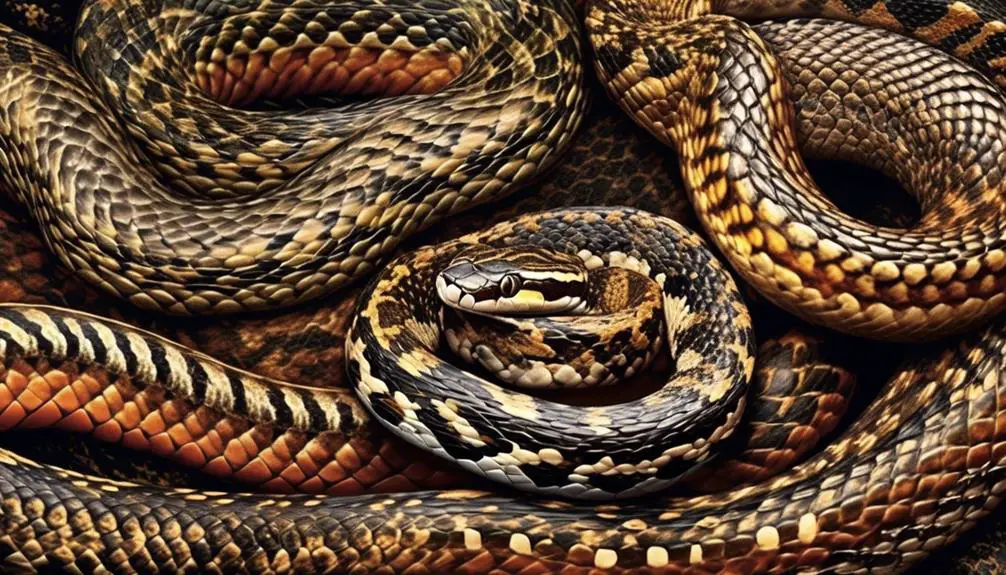Are you ready to uncover the treacherous world of deadly snakes in Italy? Brace yourself as we delve into the realm of the most venomous serpents that inhabit this beautiful country.
From the notorious Asp Viper, known for causing the majority of snake bites, to the enigmatic Nose-Horned Viper and the formidable European Adder, there is a wealth of information to discover about these reptilian predators.
But that’s not all – we will also explore the lesser-known venomous species, their preferred habitats, and where they can be found across Italy.
So, prepare to be captivated by the dangerous allure of these deadly creatures in our quest for knowledge and understanding.
Asp Viper

The Asp Viper, responsible for 90% of snake bites in Italy, is one of the most venomous snakes found in the country. This highly dangerous snake, scientifically known as Vipera aspis, is a member of the viper family. It can grow up to 75 centimeters in length and has a distinctive triangular-shaped head. The Asp Viper’s venom is potent and can cause severe symptoms, including pain, swelling, and tissue damage. In some cases, it can even lead to life-threatening complications such as organ failure and internal bleeding.
The Asp Viper is commonly found in the northern regions of Italy, particularly in the Alps and the Apennines. It prefers rocky habitats and can often be found hiding under stones or in crevices. The snake is known for its aggressive nature and won’t hesitate to strike if it feels threatened. It hunts primarily at night, feeding on small mammals, birds, and lizards.
If you’re unfortunate enough to be bitten by an Asp Viper, it’s crucial to seek immediate medical attention. The venom can act quickly, and prompt treatment is essential to prevent further complications. Don’t attempt any home remedies or traditional treatments, as these can do more harm than good. Remember, the Asp Viper is a formidable creature, and it’s best to avoid any encounters with it in the first place.
Nose-Horned Viper

Let’s talk about the Nose-Horned Viper, one of the venomous snakes found in Italy.
This snake gets its name from the horn-like scale on its nose.
The venom of the Nose-Horned Viper is highly toxic, and it can cause severe symptoms in humans if bitten.
It’s important to know the geographic distribution and preferred habitats of this snake to avoid potential encounters.
Venom and Toxicity Levels
One must be cautious of the venom and toxicity levels when encountering the Nose-Horned Viper in Italy. This species, also known as Vipera ammodytes, possesses venom that’s highly toxic and can cause severe complications if bitten.
The venom of the Nose-Horned Viper is primarily hemotoxic, meaning it affects blood and tissues. It contains enzymes that break down cells and proteins, leading to tissue damage, internal bleeding, and organ failure. The toxicity of the venom varies depending on the individual snake, but it’s generally considered to be one of the most potent among European vipers.
If bitten by a Nose-Horned Viper, immediate medical attention is crucial to receive antivenom and manage the potential effects of the venom. It’s essential to exercise caution and avoid any unnecessary interactions with this venomous snake.
Geographic Distribution and Habitats
After discussing the venom and toxicity levels of the Nose-Horned Viper in Italy, it’s important to understand its geographic distribution and preferred habitats.
The Nose-Horned Viper, also known as Vipera ammodytes, is native to Southern Europe, including Italy. It can be found in various regions of Italy, such as the Apennine Mountains, the Alps, and the islands of Sicily and Sardinia.
This snake has a preference for rocky habitats, including cliffs, rocky slopes, and dry stone walls. It can also be found in forested areas and open grasslands. The Nose-Horned Viper is well adapted to survive in these environments, using its excellent camouflage to blend in with its surroundings.
Its geographic distribution and choice of habitats make it a formidable snake to encounter in Italy.
European Adder
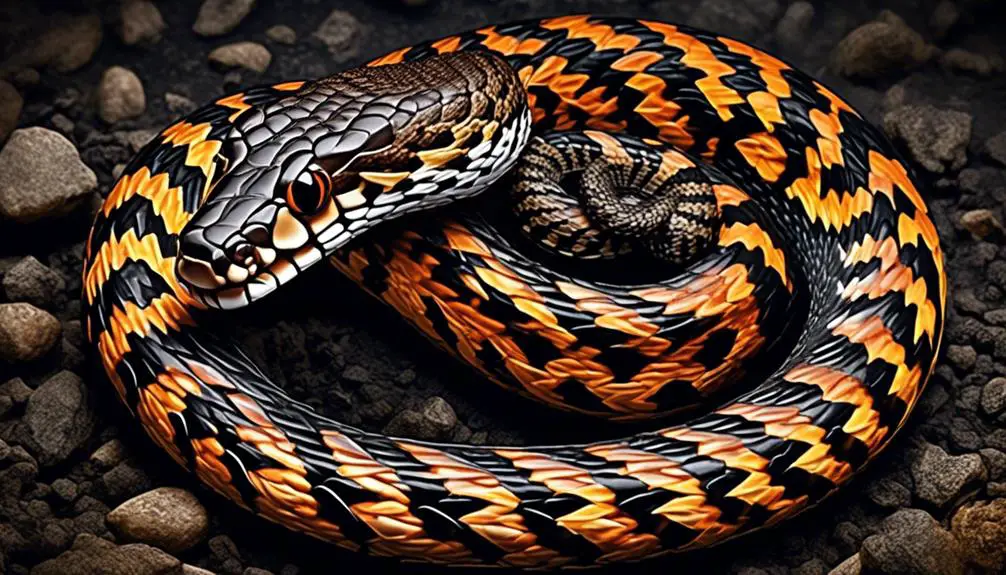
The European Adder, also known as Vipera berus, is one of the venomous snakes found in Italy. This snake is part of the viper family and is known for its distinctive features such as a dark zigzag pattern along its back and a triangular-shaped head. The European Adder is commonly found in a variety of habitats including forests, grasslands, and rocky areas. It is mainly distributed in the northern parts of Italy, particularly in the Alps and the Apennine Mountains.
Here is a table highlighting some key characteristics of the European Adder:
| Species Name | Vipera berus |
|---|---|
| Length | Up to 60 cm |
| Coloration | Grey or brown with a dark zigzag pattern |
| Venom | Hemotoxic venom that affects blood and tissue |
| Diet | Small mammals, birds, and lizards |
| Reproduction | Viviparous, giving birth to live young |
It is important to exercise caution when encountering the European Adder as its bite can be venomous. If bitten, it is crucial to seek immediate medical attention. Symptoms of a European Adder bite may include pain, swelling, and discoloration around the bite area, as well as nausea, dizziness, and difficulty breathing. Remember to stay calm, immobilize the affected limb, and keep it below heart level to slow down the spread of venom. Do not attempt to suck out the venom or use a tourniquet. Prompt medical treatment is essential for a successful recovery.
Orsinis Viper/Meadow Viper
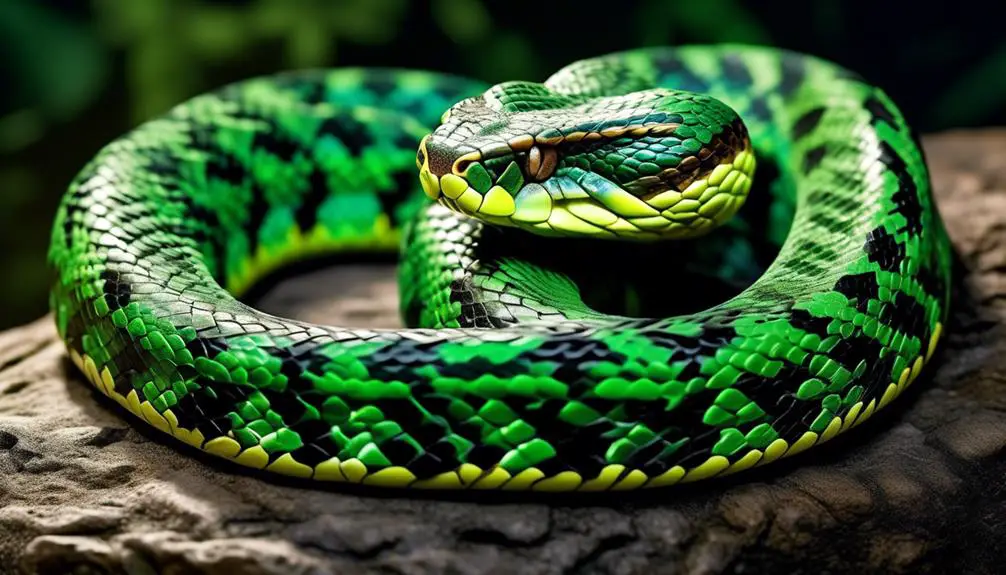
The Orsinis Viper, also known as the Meadow Viper, is a venomous snake species found in Italy. It belongs to the Viperidae family and is considered one of the most venomous snakes in the country. This viper gets its name from the Italian herpetologist Mario Orsini, who first discovered and described it in the 19th century.
The Orsinis Viper has a distinctive appearance with a slender body, reaching an average length of 60-70 centimeters. It has a triangular-shaped head, which is characteristic of venomous snakes, and its coloration varies from grey to brown, with a pattern of darker spots or bands along its body. This helps it blend into its natural habitat, which includes meadows, grasslands, and woodland edges.
Like other vipers, the Orsinis Viper possesses long, hollow fangs that inject venom into its prey. Its venom is highly potent and primarily used for hunting small mammals, lizards, and birds. If bitten by this viper, it can cause severe pain, swelling, and tissue damage.
Although encounters with the Orsinis Viper are rare, it’s important to exercise caution when in its habitat. If you come across one, it’s best to keep a safe distance and avoid any unnecessary contact. Remember, snakes play a vital role in the ecosystem, and it’s crucial to respect their space and appreciate their significance in maintaining the balance of nature.
Walser Viper
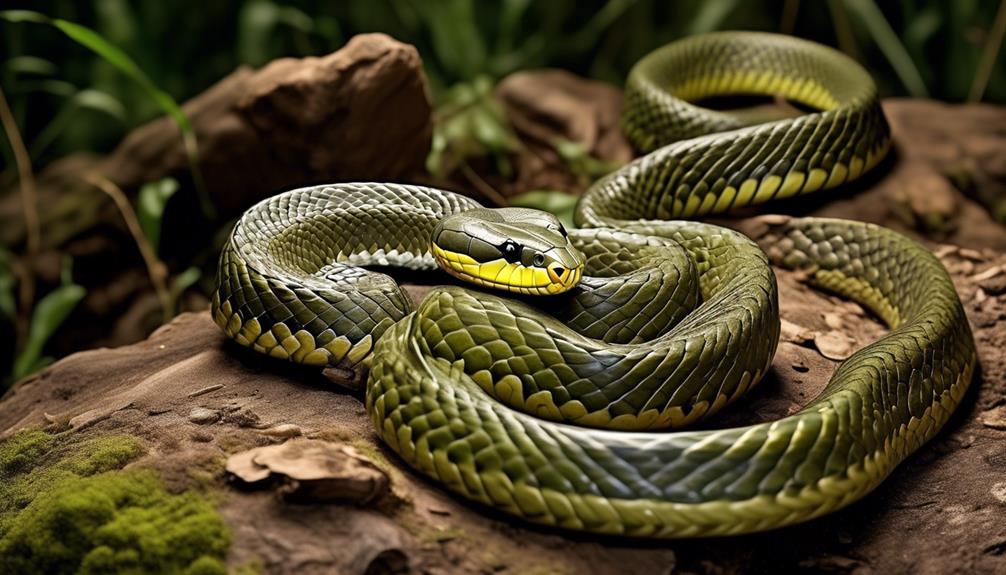
Occasionally, you may come across the Walser Viper, a venomous snake species found in Italy that belongs to the Viperidae family. The Walser Viper, also known as Vipera walser or the Alpine viper, is primarily found in the northwestern region of Italy, particularly in the Piedmont and Aosta Valley. This snake species is known for its distinct appearance, with a grey or light brown body color and a zigzag pattern running along its back. The Walser Viper can grow up to 70 centimeters in length and has a triangular-shaped head.
| Characteristics | Description |
|---|---|
| Color | Grey or light brown |
| Pattern | Zigzag along its back |
| Length | Up to 70 centimeters |
| Head Shape | Triangular |
The venom of the Walser Viper is highly toxic and can cause severe symptoms if bitten. Its venom is hemotoxic, affecting the blood and causing tissue damage. The bite may result in symptoms such as pain, swelling, and discoloration at the site of the bite, as well as systemic effects such as nausea, vomiting, and dizziness. It is important to seek immediate medical attention if bitten by a Walser Viper. Antivenom is available for the treatment of envenomation. It is also crucial to remember that, like all venomous snakes, the Walser Viper should be respected and not approached or provoked. If you encounter a Walser Viper in the wild, it is best to maintain a safe distance and allow it to retreat.
Eurasian Viper
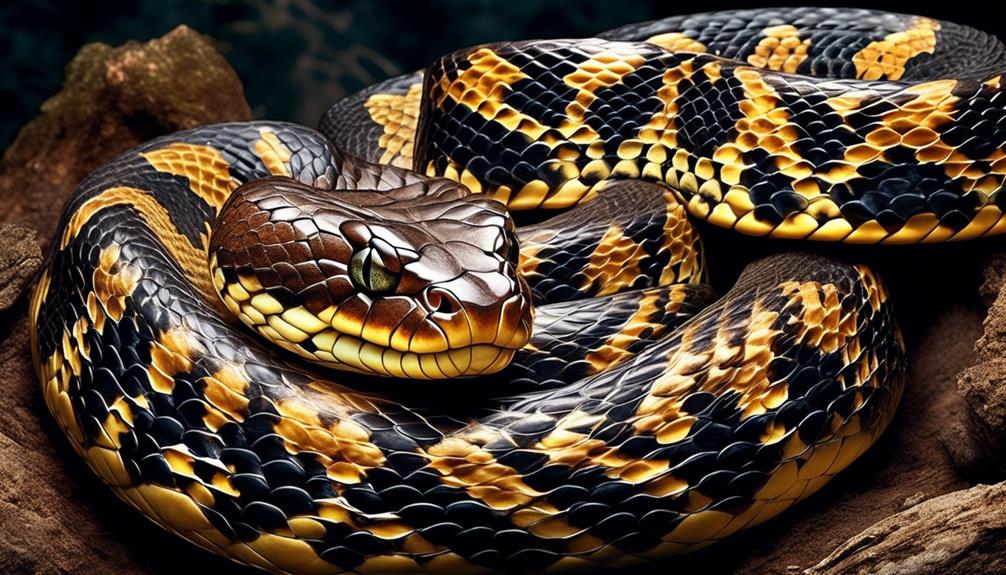
The Eurasian Viper, also known as the Common European Viper, is one of the venomous snakes found in Italy. It’s characterized by its triangular-shaped head and distinctive zigzag pattern along its back.
The Eurasian Viper is widely distributed throughout Italy and can be found in various habitats such as forests, meadows, and rocky areas.
Its venom can cause symptoms such as pain, swelling, and tissue damage, making it important to seek immediate medical attention if bitten.
Venomous Characteristics
With its distinctive venomous characteristics, the Eurasian Viper is a formidable snake found in Italy. This venomous snake possesses a pair of long, hollow fangs located at the front of its mouth, through which it injects venom into its prey or when threatened.
The venom of the Eurasian Viper is hemotoxic, meaning it affects the blood and the circulatory system. It contains enzymes that break down tissues, causing severe pain, swelling, and damage to organs. The venom can also lead to blood clotting disorders and internal bleeding.
If bitten by a Eurasian Viper, immediate medical attention is crucial. Antivenom is available to counteract the effects of the venom, but prompt treatment is necessary to prevent complications and potential fatalities.
Geographical Distribution
Moving on to the geographical distribution of the Eurasian Viper, let’s explore where this formidable venomous snake can be found in Italy.
The Eurasian Viper, also known as the Common Viper or Adder, has a wide range that extends across Europe, including Italy. In Italy, the Eurasian Viper can be found in various regions, primarily in the northern and central parts of the country.
It’s commonly found in wooded areas, forests, and grasslands, as well as rocky hillsides and mountainous regions. The snake’s adaptability allows it to thrive in a variety of habitats, from sea level to high altitudes.
The Eurasian Viper’s distribution in Italy highlights its ability to adapt and survive in diverse environments, making it a significant presence among the venomous snakes in the country.
Effects of Its Venom
The venom of the Eurasian Viper can cause a range of effects when injected into its prey or a human victim. The venom is primarily composed of hemotoxic components, which means it affects the blood and tissues. The effects of the venom can vary depending on the amount injected, the location of the bite, and the individual’s health and immune response. Common symptoms of a Eurasian Viper bite include severe pain and swelling at the bite site, bruising, blistering, and necrosis of the surrounding tissues. In severe cases, the venom can lead to systemic effects such as low blood pressure, bleeding disorders, kidney damage, and even organ failure. Immediate medical attention is crucial in order to receive appropriate treatment, which may include antivenom administration and supportive care.
| Effects of Eurasian Viper Venom | Symptoms |
|---|---|
| Severe pain and swelling | Bruising |
| Blistering | Necrosis |
| Low blood pressure | Bleeding disorders |
| Kidney damage | Organ failure |
Montpellier Snake

The Montpellier Snake, one of the venomous snake species in Italy, is known for its distinctive appearance and potent venom. This species, scientifically known as Malpolon monspessulanus, can be found in various regions of Italy, including Tuscany, Liguria, and Sardinia.
The Montpellier Snake is characterized by its long and slender body, reaching lengths of up to 2 meters. Its coloration can vary, ranging from olive green to brown, with a series of dark blotches running along its back. One of the key identifying features of this snake is its large eyes with round pupils, which distinguish it from other venomous snakes in Italy.
When it comes to venom, the Montpellier Snake possesses a potent cocktail that’s primarily used for subduing its prey. Its venom contains a mixture of toxins that affect the nervous system, causing paralysis in its victims. While bites from the Montpellier Snake can be painful and potentially dangerous, fatalities are rare, as this snake generally prefers to avoid human encounters. However, if bitten, it’s important to seek medical attention immediately to receive the appropriate treatment.
In terms of habitat, the Montpellier Snake can be found in a variety of environments, including grasslands, coastal areas, and scrublands. It’s a highly adaptable species that can thrive in both rural and urban landscapes. The Montpellier Snake is an opportunistic hunter, feeding on a variety of prey, including small mammals, birds, lizards, and even other snakes.
Symptoms of a Venomous Snake Bite

After learning about the Montpellier Snake, it is important to understand the symptoms of a venomous snake bite in Italy. Being able to recognize these symptoms can be crucial in seeking immediate medical attention and receiving the appropriate treatment. Here is a table outlining the common symptoms of a venomous snake bite in Italy:
| Symptoms of a Venomous Snake Bite in Italy |
|---|
| Swelling and redness at the site of the bite |
| Intense pain and burning sensation |
| Development of blisters or necrotic tissue |
It is important to note that the severity of the symptoms can vary depending on the snake species and the amount of venom injected. Additionally, some individuals may experience systemic symptoms such as nausea, vomiting, dizziness, and difficulty breathing. If you or someone you know is bitten by a venomous snake in Italy, it is crucial to seek immediate medical attention. While waiting for medical help, it is recommended to keep the affected limb immobilized, at or below heart level, and avoid any attempts to suck out the venom or apply tourniquets. Remember, prompt medical treatment is essential in minimizing the potential complications of a venomous snake bite.
First Aid Tips for Snake Bites

To provide immediate assistance for snake bites, it’s crucial to follow these first aid tips.
Firstly, it’s important to stay calm and minimize movement to slow down the spread of venom.
Next, remove any tight clothing or jewelry near the bite area, as swelling may occur. Keep the affected limb below heart level to reduce the flow of venom.
Don’t attempt to suck out the venom or make any incisions, as this can worsen the situation. Instead, cover the wound with a clean, dry dressing.
It’s crucial to seek medical help immediately, as venomous snake bites require anti-venom treatment. While waiting for medical assistance, immobilize the affected limb to prevent the venom from spreading further. Remember to take note of the snake’s appearance, as this information will aid in the administration of the correct anti-venom.
Additionally, avoid using any tourniquets or ice packs, as they’re ineffective and can cause tissue damage.
Number of Venomous Snakes in Italy

Did you know that Italy is home to seven species of venomous snakes, all of which belong to the viper family?
These venomous snakes have different preferred habitats and geographical distributions throughout the country.
Understanding the number and types of venomous snakes in Italy is crucial for staying safe while exploring its diverse landscapes.
Viper Family Overview
The viper family in Italy consists of seven species of venomous snakes. These snakes are highly dangerous and should be approached with caution. The most well-known species in this family is the Asp Viper, which is responsible for 90% of snake bites in Italy. Its venom can cause symptoms such as swelling, pain, and difficulty breathing.
Other species in the viper family include the Nose-Horned Viper, European Adder, Orsinis Viper, Walser Viper, Eurasian Viper, and Montpellier Snake. Each of these snakes has its own unique characteristics and habitats. It’s important to be aware of these species and their preferred habitats to avoid any potential encounters.
If you come across any venomous snakes, it’s crucial to seek immediate medical attention as their bites can be life-threatening.
Venomous Snake Distribution
As we shift our focus to the subtopic of Venomous Snake Distribution in Italy, let’s explore the number of venomous snakes present in the country and their distribution across different regions.
Italy is home to seven species of venomous snakes, all of which belong to the viper family. These venomous snakes are found in various habitats throughout the country. The Asp Viper, Nose-Horned Viper, European Adder, Orsinis Viper, Walser Viper, Eurasian Viper, and Montpellier Snake can be found in different regions of Italy.
The exact number of venomous snakes in each region may vary, but they’re distributed across the country, from the southern regions of Sicily and Calabria to the northern regions of Lombardy and Piedmont.
It’s important to be aware of their presence and take necessary precautions when visiting these areas.
Habitat Preferences
When considering the habitat preferences of venomous snakes in Italy, it’s important to understand that these snakes can be found in various regions throughout the country. Italy is home to seven species of venomous snakes, all of which belong to the viper family. These snakes have adapted to different habitats, allowing them to thrive in diverse environments.
The Asp Viper, for example, can be found in rocky areas and dry Mediterranean scrublands. The Nose-Horned Viper prefers grassy meadows and open woodlands. The European Adder is commonly found in forests and grassy areas. The Orsinis Viper, Walser Viper, Eurasian Viper, and Montpellier Snake also have their own specific habitat preferences.
It’s crucial to be aware of these preferences when exploring the Italian countryside to avoid any potential encounters with these deadly creatures.
Preferred Habitats and Geographical Distribution

Venomous snakes in Italy can be found in a variety of preferred habitats and have specific geographical distributions. Understanding their habitats and distributions is crucial in order to minimize encounters and reduce the risk of snake bites. Here is a table highlighting the preferred habitats and geographical distributions of some venomous snakes in Italy:
Preferred Habitats | Geographical Distribution
———————-|————————-
Forests and woodlands | Asp Viper, Nose-Horned Viper, European Adder
Grasslands and meadows| Orsinis Viper/Meadow Viper, Walser Viper
Rocky areas | Eurasian Viper, Montpellier Snake
The Asp Viper and Nose-Horned Viper, for example, prefer forests and woodlands, while the European Adder is commonly found in these habitats as well. The Orsinis Viper and Walser Viper, on the other hand, are more commonly found in grasslands and meadows. The Eurasian Viper and Montpellier Snake tend to inhabit rocky areas.
Geographically, venomous snakes in Italy are distributed throughout the country. However, certain species have more specific ranges. For instance, the Asp Viper is found in central and southern Italy, while the Nose-Horned Viper can be found in the central and northern regions. The European Adder has a wide distribution across Italy, except for the southernmost regions.
It’s important to note that while these snakes have preferred habitats and distributions, they can still be encountered in other areas. Therefore, it is always advisable to exercise caution and be aware of your surroundings when exploring nature in Italy.
Italian Aesculapian Snake

The Italian Aesculapian snake, a non-venomous species endemic to Southern Italy and Sicily, is known for its impressive size and unique feeding habits. These snakes can grow up to 6 feet in length, making them the largest snake species in Italy. They’ve a slender body and smooth scales, usually varying in color from brown to gray with some individuals having a reddish hue.
Unlike other snakes, the Italian Aesculapian snake has a specialized diet. They primarily feed on small mammals, such as mice and rats, but they’re also known to consume birds and their eggs. They’re skilled climbers and can be found in a variety of habitats, including forests, grasslands, and even urban areas.
Despite their size, these snakes are harmless to humans. They don’t possess venom and aren’t aggressive. In fact, they’re often considered beneficial to the ecosystem as they help control rodent populations.
The Italian Aesculapian snake plays an important role in the biodiversity of Southern Italy and Sicily. Efforts are being made to protect their natural habitats and ensure their continued existence in the region.

Erzsebet Frey (Eli Frey) is an ecologist and online entrepreneur with a Master of Science in Ecology from the University of Belgrade. Originally from Serbia, she has lived in Sri Lanka since 2017. Eli has worked internationally in countries like Oman, Brazil, Germany, and Sri Lanka. In 2018, she expanded into SEO and blogging, completing courses from UC Davis and Edinburgh. Eli has founded multiple websites focused on biology, ecology, environmental science, sustainable and simple living, and outdoor activities. She enjoys creating nature and simple living videos on YouTube and participates in speleology, diving, and hiking.

